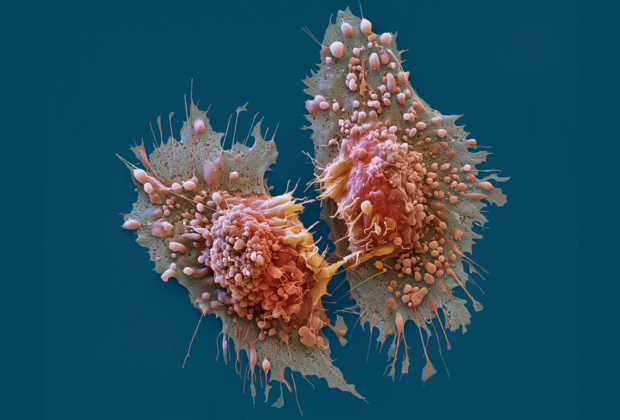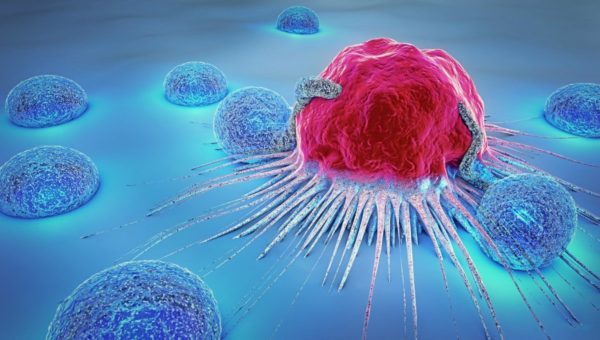In a brand new examine, researchers from the Columbia College Medical Heart (CUMC) discovered that the fusion of two adjoining genes can result in overexpression of mitochondria and a rise within the quantity of gas wanted for the loopy development of cells, resulting in most cancers. Additionally they discovered that medication that concentrate on this newly recognized most cancers pathway can cease tumor development in human most cancers cells and in a mouse mannequin of mind most cancers. Glioblastoma is the commonest and invasive main mind most cancers. In a 2012 examine printed in Science (Science, doi: 10.1126 / science.1220834), the CUMC group discovered that some glioblastoma circumstances have been attributable to the fusion of two genes, FGFR3 and TACC3. On the time, it was thought that this genetic fusion was restricted to a subset of mind tumors, affecting about 300 sufferers annually in america. Nevertheless, since then, different researchers have noticed that this similar genetic fusion exists in a subset of lung, esophageal, breast, head and neck, cervical and bladder cancers, affecting hundreds of most cancers sufferers. “This is probably the single most common gene fusion in human cancers,” stated Antonio Iavarone, MD, a professor of pathology and cell biology professor of neurology on the CUMC Institute for Most cancers Genetics and co-author of the paper, “and we wanted to determine how the FGFR3-TACC3 fusion Induce and maintain cancer so that we may identify new targets for drug therapy. ” Mitochondrial modifications have lengthy been noticed in cancers, however mitochondrial exercise and mobile metabolism have been discovered solely not too long ago to correlate with sure cancers. Nevertheless, the mechanism by which mutations in genes alter mitochondrial exercise and promote tumor development is unknown. Within the present examine, these researchers in contrast the exercise of hundreds of genes in FGFR3-TACC3-carrying and non-FGFR3-TACC3-bearing most cancers cells. They discovered that this fusion significantly elevated the variety of mitochondria and elevated their exercise. Since cancerous cells require giant quantities of vitality to quickly divide and develop, these cancerous cells thrive when mitochondrial exercise will increase. Via quite a lot of experimental strategies, these researchers decided that this gene fusion initiates a sequence of occasions that improve mitochondrial exercise. First, FGFR3-TACC3 prompts a protein known as PIN4. Upon activation, PIN4 migrates into peroxisomes. As an organelle, peroxisomes degrade fats into substances that enhance mitochondrial exercise. Triggered by activated PIN4, the variety of peroxisomes elevated four to five instances, releasing a considerable amount of oxidant. Lastly, these oxidants induce PGC1α manufacturing. As a key regulator of mitochondrial metabolism, PGC1α will increase mitochondrial exercise and vitality manufacturing. Anna Lasorella, PhD, co-author of the paper, and professor of cell biology on the CUMC Institute for Most cancers Genetics, stated: “Our research provides the first clue to how oncogenes activate mitochondrial metabolism, which is a crucial long-standing area in cancer research and provided the first direct evidence of the involvement of peroxisomes in cancer production, giving us new insights on how we can disrupt the fuel supply to cancer. ” In one other experiment, remedy of human mind most cancers cells containing FGFR3-TACC3 with a mitochondrial inhibitor blocked vitality manufacturing in most cancers cells and considerably slowed tumor development. This impact can also be noticed in human mind most cancers mouse fashions that comprise this gene fusion. Dr. Lavarone speculates twin remedy could also be wanted for sufferers with FGFR3-TACC3 tumors. In earlier research, these researchers have discovered that medication that inhibit FGFR3 kinase enhance survival when examined in a glioblastoma mouse mannequin. FGFR3 kinase assists within the operate of the protein produced by this fusion gene. Now, Dr. Marc Sanson of the Pitie Salpetriere Hospital in Paris, France, co-author of the paper, is testing these medication in sufferers with recurrent glioblastoma in a scientific trial. “Drugs that inhibit active kinases have been tested in some cancers and have had encouraging results, but inevitably, they are resistant to these drugs and the tumors have relapsed,” stated Dr. Lavarone. Nevertheless, direct concentrating on of mitochondrial metabolism and FGFR3-TACC3 might stop this drug-resistant manufacturing and tumor recurrence. ” Based mostly on the findings of the examine, these researchers at the moment are considering the opportunity of including mitochondrial inhibitors to the therapies in sufferers enrolled within the trial. The researchers are at present testing this twin remedy in human most cancers cells and animal fashions.




